|
By Ethan Farr, Sports Myotherapist & Exercise Scientist Injuries are an unfortunate reality for many people, whether they occur during sports, exercise, or everyday activities. However, the road to recovery doesn't have to be a daunting journey. In fact, exercise can and should play a pivotal role in not only regaining strength and mobility but also in fostering a positive mindset throughout the healing process. Today we'll explore the benefits of using exercise as a tool for getting back from an injury, as well as some key considerations to keep in mind along the way.
Contrary to popular belief, rest alone may not always be the best approach to healing from an injury. In fact A great deal of scientific evidence suggests that the stimulation of movement, especially in the early stages of healing, is a crucial part of recovery from injuries and surgeries. While it's essential to give your body time to recuperate, incorporating gentle exercise can promote blood flow, reduce stiffness, and prevent muscle atrophy. Exercise helps maintain joint flexibility and range of motion, which can be especially beneficial for injuries involving the muscles, tendons, or ligaments. Additionally, engaging in physical activity releases endorphins, which are natural mood elevators that can alleviate pain and boost overall well-being. It's crucial to work closely with a healthcare professional or physical therapist to develop a personalised exercise regimen that aligns with your specific injury and recovery goals and to ensure you understand the exercise, how to do it and what muscles should be activated during the exercise. Depending on the nature and severity of your injury, your exercise program may include a combination of stretching (or getting back to full range of motion), strength training (including building up the muscles endurance), cardiovascular exercises, and low-impact activities (even just walking can have a profound impact on your recovery). Be mindful of any limitations or restrictions imposed by your injury, and avoid activities that exacerbate pain or discomfort the aim is to strengthen not reinjure. Patience is key when it comes to injury recovery and believe me I understand it’s frustrating not being able to do what you used to do. However it's essential to start slowly and gradually increase the intensity and duration of your workouts as your body heals and is able to cope with the load. Listen to your body and be mindful of any signals of pain or fatigue. Pushing yourself too hard too soon can impede the healing process and increase the risk of re-injury. Celebrate small victories along the way, whether it's reaching a new milestone in your rehabilitation exercises or experiencing a reduction in pain symptoms. It’s important to reframe negative opinions on your rehabilitation pathway rather than “this is all I can do without pain” consider “I can do this much to help strengthen and get me back to a pain free lifestyle” It is also useful to use short term goals to keep track of your progress and improvements e.g. “In two weeks time be able to walk 15 minutes without pain or flare ups afterwards” this would be a great goal as it is timed so you know when to look back at it and see if you met the goal and it is achievable for most. Injury recovery is a journey that requires patience, perseverance, and a holistic approach to healing. By harnessing the power of exercise, along with the guidance of healthcare professionals and a positive mindset, you can not only bounce back from your injury but emerge stronger and more resilient than before. If this interests you ensure that you get in contact with us by phoning the clinic on 03 8204 0970 or email me at [email protected] - or you can book your first appointment with me to get you pain free and starting on your rehabilitation pathway today! By Rachael Bird, Myotherapist Myotherapy offers significant benefits to individuals engaged in activities such as martial arts, boxing, and self-defence due to its focus on addressing muscular issues and enhancing physical performance. These activities often involve repetitive and high-impact movements, leading to muscle strain, fatigue, and the risk of injury. Myotherapy techniques, including targeted massage, trigger point therapy, and specialised stretches, can help alleviate muscle tension, improve flexibility, and promote better muscle function specific to the demands of these practices. For martial artists, boxers, and self-defence practitioners, myotherapy plays a crucial role in injury prevention and rehabilitation. By targeting the muscle groups involved in these activities, myotherapists can relieve muscle tightness, reduce pain, and address imbalances, allowing individuals to train more effectively. Additionally, myotherapy can aid in post-training recovery, facilitating faster recuperation from intense workouts or injuries. Moreover, myotherapists often design customised exercise and stretching routines tailored to the specific needs and movements of martial arts, boxing, or self-defence practices. These tailored routines not only help in preventing injuries but also contribute to improving overall flexibility, range of motion, and physical performance, enabling practitioners to perform at their best while minimising the risk of potential injuries. Ultimately, myotherapy serves as a valuable tool in enhancing the overall physical well-being and performance of individuals engaged in these physically demanding disciplines. I recently met Jim from RAW Life Australia. He's an experienced Martial Arts trainer who operates his gym just around the corner from us here in Rowville. I interviewed him about his training style.
Rachael: Hey Jim, tell us more about the services you offer to our community! Jim: In short we provide training in confidence. We run tailored group kickboxing fitness classes, teens martial arts, adult combatives, self protection courses, workshops, as well as personal 1 on 1 sessions where we tailor the session to whatever the clients needs are. I do a lot of 1 on 1 work with people who are neurodiverse and to those that have extra needs. Rachael: Where is your gym located? Jim: We’re located at Factory 2, 3 Hi-tech Place, Rowville. Just off Laser drive. Rachael: How long have you been operating? Jim: Our full time centre in Rowville has been open since January 2020 but I have been teaching for over 35 years. Rachael: What are your opening hours? Jim: We’re open Monday to Friday from 6:00 a.m. until late, as well as Saturday and Sundays from 7:00 until 12:00, mainly for private sessions. Rachael: What inspired you to teach martial arts? Jim: I first started it as I felt I needed to learn how to fight but eventually realised that it was all about improving who I was as a human being, a husband, a father, a son, a brother, and as a friend. The synergy between the martial arts and life really grabbed me and now it all blurs into one. Rachael: Tell us more about you and your experience Jim: I have been training in the martial arts for almost 40 years and teaching for over 35 of those years. I am an instructor in several martial arts from around the world as well as an experienced personal trainer. I have competed in the UK, Australia, and the Philippines. I teach around Australia as well as having taught in England, Ireland, Belgium, Germany, Finland, Indonesia, UAE, and New Zealand. I have taught various community groups, private and public schools, as well as private organisations over the last coupe of decades in and around Australia. These days I actually find it hard to tell people exactly what I do. The best I’ve come up with is: I help people help themselves become better, whatever ‘better' means to them. Rachael: We primarily treat people who have pain, injuries and ongoing health conditions. We see a variety of patients, from very sedentary office workers to highly physically active labourers and athletes. Our patient base varies from highly health conscious to people who struggle to maintain good health habits. What types of people does your business serve? Jim: I help a wide section of the community, both here and abroad. From those who want to move better to those that want to become stronger and/or lose weight. I help people who want to be more confident or to build a better version of themselves. I also help people who want to learn self protection skills to those that want to explore the martial arts. I train people from 3 to people in there 80’s and people of varying needs. I help professionals to stay at home parents, people who are neurodiverse to people who are neurotypical, people who have disabilities to people who are able-bodied, as well as survivors of many of lifes trials and tribulations. Every day I have very different clients, on paper at least, in reality we’re all very similar so I just train ‘people’. Are you interested in joining a martial arts class? Check out RAW Life Australia and let Jim know that Rachael from Simple Wellness Myotherapy sent you! By Rachael Bird, Myotherapist I recently had the pleasure of meeting with Anke Wagner, a local pilates instructor here in Rowville. Anke is a very experienced instructor, shes been teaching for nearly 2 decades, and based locally in Rowville for 9 years. I interviewed Anke about her classes and her approach to pilates. What services do you provide to the community and where are you located? I offer Pilates classes in Rowville. The classes range from using the reformer equipment, and the Pilates chair and separate classes with just the aerial hammock. The groups are small with a maximum of 3 people. Private classes are offered for beginners as well as clients with specific needs for their injuries. How long have you been operating? AnkePilates has been operating since 2006 and has been in Rowville since 2014. What are your open hours? Monday to Wednesday - 9:15-1pm, 5pm-8.15pm Thursday and Friday 9:15 - 1pm Private classes can be booked outside these opening hours. What made you choose to teach Pilates? I’ve always loved dancing and movement in general. From an early age, I’ve danced ballet up until my late twenties. While living in New Delhi, India, I taught movement classes and Aqua fitness at the American Embassy. Following this amazing experience I began training myself in Pilates in Germany. Once I experienced the Pilates equipment it got me hooked and I knew I wanted to let others experience it too. What types of people does your business serve? I teach a variety of clients, currently from ages 12 to 80. My clients come from all around the eastern suburbs and mostly join to work on their strength and general fitness. I also have clients who join to form a fitness routine with me as well as enjoying the socialising of being in a small intimate group. Some are young mothers who need a bit of ‘me-time’, some don’t enjoy going to a normal gym, or are women in their 40-50s experiencing menopause. No matter the diversity in clients, I always make sure to integrate fun and laughter during our workouts. If a client has ongoing health issues I offer to teach one-on-one. What do you like most about it? My favourite part about teaching Pilates is that it gives people confidence even when their mobility and moving range is limited. There is also so much variety in movements that the Pilates method offers which lets me tailor the class to create challenges and to adjust and support each individual's needs. And of course the way of teaching. I get to use a lot of visual language to facilitate a certain movement. Pilates is a big playground for me. Tell us about you?
Besides my movement practices, you can find me going on long hikes through the Dandenong Rangers with my husband or enjoying all the flowers I’ve planted in my garden. I’m also on the path to becoming a Harp Therapist as well as giving Sound Massages. My qualifications include:
How can people find more information or book a pilates class with you? Information about classes can be found online at www.ankepilates.com.au I can be contacted for enquiries and bookings by emailing [email protected] or by phone on 0439109775. By Duke Autret, Myotherapist Exercise has long been touted as a means of promoting physical health, but recent scientific findings suggest that it may also be one of the most effective therapies for mental health. For those of us who are frequently trapped in our chairs, offices, home office, cars, and then the ‘comfy’ chair in front of the tele, these recent findings will validate what we’ve known we need to do! The Science..
A new research paper published in the British Journal of Sports Medicine has provided compelling evidence for the benefits of exercise therapy for treating depression and anxiety, suggesting that it may be more effective than other commonly used interventions such as medication and psychotherapy. The study, which analysed data from over 1,000 individuals with depression and anxiety, found that exercise therapy was associated with significantly greater reductions in symptoms than other interventions, such as antidepressant medications and psychotherapy. Participants who engaged in regular exercise showed a 26% reduction in symptoms of depression and a 20% reduction in symptoms of anxiety, compared to those who received medication or psychotherapy alone. But why is exercise therapy so effective for treating depression and anxiety? Studies have shown that exercise promotes the release of endorphins, which are natural mood-boosters that help to alleviate symptoms of depression and anxiety. In addition, exercise can help to reduce inflammation in the body, which has been linked to depression and other mental health conditions. Exercise also promotes the growth of new brain cells and improves connectivity between brain regions. Additionally, exercise can help individuals to develop a greater sense of control over their bodies and their lives, which can be empowering and boost self-esteem. A little for a lot And according to a recent article in ScienceAlert, another large-scale study of nearly 50,000 people showed that exercise is the most effective treatment for depression, with a 43% reduction in symptoms compared to other treatments such as medication and therapy. Exercise also has the added benefit of being a low-cost, low-risk intervention that can be easily integrated into most people's lives. Even small amounts of exercise, such as a 10-minute walk or a few minutes of stretching, have been shown to have benefits for mental health. And for those who are able to engage in more vigorous exercise, such as running or weightlifting, the benefits may be even greater. What does this all mean? Of course, exercise therapy should not be seen as a replacement for other treatments for mental health conditions, such as medication and therapy. However, it may be a valuable addition to a comprehensive treatment plan, and one that has the potential to improve outcomes for many individuals struggling with depression and anxiety. And the evidence is clear - exercise therapy is an effective and powerful intervention for promoting mental health. If you're struggling with depression or anxiety, consider incorporating regular exercise into your routine. Not only can it help to alleviate symptoms, but it may also improve your overall sense of well-being and quality of life. While the ideal amount of exercise is still a matter of debate, the authors suggest that individuals should aim for at least 150 minutes of moderate exercise per week, such as brisk walking or cycling, in order to achieve the maximum mental health benefits. Working with people recovering from pain and injury, we know that even small amounts of physical activity can have significant benefits for mental health. So why not take a walk, go for a bike ride, or hit the beach, pool, or gym today? Your mental health will thank you! Here in Melbourne, we're back in Stage 3 Restrictions. That means that most of our favourite ways to move, stretch and exercise may not be available to us right now, including gyms, yoga studios, pilates classes, martial arts, personal training, and lots more. So what are your options from home to keep moving, stretching and feeling physically well? Here are some of our favourite at home, online accessible resources. Erica Webb Yoga & Pilates Virtual Studio - Erica has an amazing and gentle approach to movement as medicine. Shes fun, insightful, and her classes are suitable for people of all ages and abilities. Erica is a local yoga teacher from Croydon. Her membership subscription costs less than a single traditional yoga class per month.
Nate Bower Fitness - you don't need a boxing bag to be able to follow along with these boxing drills. Guaranteed to get your heart rate up, and lots of beginner friendly classes. This YouTube channel provides free 20-30 minute boxing class videos. Couch To 5K App - Want to start running? This app helps you go from dusting off your old runners, to running a full 5km. Starting with very small bursts of running with big walk intervals, and as your fitness improves the interval timing changes, until you can make it through your full 5km run. I've used this app myself in the past and found it really useful and encouraging. You can use the official C25K app on Apple or Android, or there are plenty of similar versions for free (maybe with a few ads!) Mountain Pilates - Jeanette Tatton is a local pilates instructor in the Hills, and is running Zoom pilates classes each week. Pilates is a great full body workout that is gentle but effective at strengthening your body. Alpha Health - Our good friend Ash and her partner Paul are amazing personal trainers offering online coaching to keep you fit and moving throughout isolation. When Anytime Fitness in Ferntree Gully is open, Ash offers training there, too. What are your favourite online resources to stay inspired and healthy during lockdown? Let us know on our social media channels on Facebook and Instagram! Anyone with long term pain will likely relate with this statement my sister recently made about her chronic back pain and exercise: "Yeah, the pain flare ups seem to be less frequent with exercise. But also feels hard to convince myself to exercise, because if I stretch too far it hurts real bad, too??" This situation is so common with people I see every day in the clinic. The pain has been there for a long time, but thinking on times that they've been most physically active, that tends to be the times that the pain has been its least intense, frequent and invasive. So if we know that staying active can change the intensity, frequency and overall impact pain has on our lives, why is it so hard to convince ourselves to do the exercises? Its an internal fight that a lot of people have with themselves. In practitioner language we call it Fear-Avoidance Behaviours, which basically means not doing the beneficial thing because of the fear of causing pain even if you know long term the beneficial thing reduces the pain intensity and/or frequency. It’s one of the biggest struggles for people with chronic pain.
I think a lot of the solution to it is finding a really enjoyable activity. In my sisters situation, she started taking MMA classes last year. A weird choice for someone who is already in pain, right? But even though shes learning some serious fighting moves and coming away with some proper bruises, her long term back pain has been more under control than it had been in ages. I explained it to her like this. "You’re not there to slug away at a pointless activity that you don’t enjoy. You have fun, you learn, it’s interactive, the people are nice and supportive, it’s social, it’s not 100% competitive, you get to do it as a family activity with Matt and the kids. So it’s probably so much more appealing than going for a run or going to lift weights at a gym by yourself for an hour a few days a week." And I think she got it! "Absolutely! Ohh that all makes so much sense... it's so true though. Going to the regular gym or even working out at home is like... ugh. No thanks. But going to MMA is so easy?! Because it's just fun... I mean, it's actually a really complicated work out, and some of it SUCKS... but is somehow so damn fun?!" While she's having all this fun kicking and punching, she'll definitely be using a lot of back muscles to coordinate and control the movements, and core muscles, hip stabilisers, all the areas that single exercise prescription focuses on. The difference is instead of doing separate specific exercises for each muscle group, it’s all just rolled into a sequence of movements and blows and dodges, mixed in with an instructor that makes her laugh and being able to spar with her partner. This is way more enjoyable for her than doing strict sets and reps of isolated exercises. Some people love doing the specific exercises, and guess what, thats awesome too because if you love it and enjoy it, you're more likely to do it! Lets talk neuroscience We already know that almost any kind of exercise produces endorphins, which are these wonderful little brain chemicals (neurotransmitters) that are natural pain and stress relievers. Endorphins act a little differently on the Peripheral Nervous System (all the nerves in your body that aren't part of your brain or spinal cord) and the Central Nervous System (the brain and spinal cord) They work by binding to opioid receptors in the Peripheral Nervous System. Its like your own personal stash of codeine, and your body makes it in response to exercise! They also work by reducing the amount of inflammatory chemicals that the nerve produces. In the Central Nervous System, endorphins also bind to the opioid receptors. Here their effect is to reduce another neurotransmitter called GABA. With GABA reduced, your brain is able to produce more dopamine - the pleasure neurotransmitter! Interestingly, these opioid receptors in the brain are most abundant in regions of the brain that control pain regulation. So how is it more helpful to have a fun active hobby? Researchers found that endorphin release varies depending on the intensity of the activity, suggesting that higher physical intensity leads to increased endorphins compared to more moderate activity. But is the endorphin rush better from a fun activity vs an activity that you find boring or tedious? I'm honestly not sure, but what I do believe with certainty is that most people are way more likely to actually DO the exercise if its something they find fun and enjoyable and actually have a desire to do it. Realistically, it probably doesn't matter WHAT you do, more that you just DO IT! Have you ever found that gentle movement such as yoga helped to alleviate your symptoms, but you struggle to go to a regular class? Here at Simple Wellness Myotherapy, we know how good moving your body can be - for your muscles, joints, tendons and ligaments, as well as your nervous system and your mind! But we also know that it can be tough to get to a class when you're feeling sore or brain-foggy. That's why we sat down with Erica Webb, a Yoga, Mat Pilates and Somatic Exercise Coach for a chat. If you're looking to incorporate movement in the comfort of your own home, her Mindful Movement Virtual Studio might be for you. Hi Erica! Thanks for joining us.
Could you start off by telling us a little about yourself and the Mindful Movement Virtual Studio? Thanks guys! I’m a Yoga, Mat Pilates and Somatic Exercise Coach based in Melbourne, Australia. As well as a mindful movement coach, I am a mother to two young boys and a writer and illustrator. At my core I'm curious, kind, committed and just the right amount of quirky! I truly believe that movement is powerful. Mindful movement is more powerful still. That’s why I created The Mindful Movement Virtual Studio. The Mindful Movement Virtual Studio is an online Yoga, Pilates and Somatic Exercise Studio. It allows you to do your movement practice from anywhere, anytime. But it’s more than just a library of classes. It’s also a space where you’re supported! We talk about mindset, forming habits and other practical elements that make a home practice do-able and sustainable. As part of the Studio, we also offer live masterclasses, weekly Q&As and more. Who is this Virtual Studio for? People who want to feel better in their own bodies! Many of my clients are busy women who want to feel better and know they need to commit to look after themselves and take responsibility. It’s also for people who simply don’t get the chance to go to a local yoga class. It might be that you’re juggling around kids, or that you have pain or a condition that makes it difficult for you to make a regular class. Is there anyone who wouldn’t benefit from this service? I can really only think of two:
Does someone need to have experience with yoga to benefit from the Virtual Studio? Not at all! Many people who join are brand-new to yoga. But for those who do know their yoga, it’s beneficial because we use a lot of techniques and poses that aren’t commonly used in the average yoga class. Do we need to commit a lot of time to see the benefits? No! Most of the classes are 30 minutes or less. There are some that are only 5 minutes, and some go up to an hour. So it’s more about committing little chunks of time on a regular basis, rather than committing to a dozen hours every single week. Do we need to be skinny, super fit, bendy or decked out in the latest activewear to do these classes? Firstly: you can rock up in your PJs if you want to! Secondly, these classes are designed to be inclusive – you can be whatever size, fitness level and flexibility level and still reap the benefits. Do we need fancy equipment? A few of the classes incorporate props, but there are always at-home alternatives you can use. Many people use pillows and blankets as their props! However, you can always filter the classes to find a prop-free video if you need. Are the classes appropriate for people who have pain or ongoing injuries? If you have a condition or injury that might impact your ability to engage in physical activity, I always recommend getting clearance from your health professional first. With that in mind, the majority of classes are gentle and have variations to suit almost any issue. For example, some of the classes can be done while seated. Some of the more advanced classes may not suit for some types of injury or pain that affect the function of your muscles. If you’re unsure, you’re welcome to contact me directly about a specific class and whether it’s right for you. What if we need a little extra support with anything? I’m here to help! I make sure that I’m available for people to ask questions. Feel free to reach out if you need anything. Ok, you’ve got us: how do we sign up? If you’re ready to prioritise YOU, make time to move well and feel well, head to this link to join! The doors are open until Sunday 15th March. As we get into the swing of the new year, many people will make a resolution to get fit. But if you go about this the wrong way, it can end in an injury that puts you on the sidelines for weeks or even months.
Exercise is amazing for your body and your mind. It boosts mental wellbeing, helps you to manage pain and over the long-term can protect you against injury. So how can you get back into a fitness regime without hurting yourself? Here are our top tips to minimise your chance of injury. Start small – even if you used to be a master! We know from experience that it’s really tempting to go back to doing what you have done in the past. After all, running that fast, lifting those weights or doing Pilates 5 days a week used to be easy! But whether you’ve been away from exercise because of injury, pregnancy or just that life got on top of you, this is the most common mistake people make. Over time, your muscles will become less conditioned. If you go back to your old regime, it may be too stressful on your body and lead to an injury. So don’t just jump in where you were. Instead, go back to the start. Your body will start to remember if you give it time to warm back up to exercise. Increase your frequency and intensity with time This goes hand in hand with the first point. It takes time for the body to get back into the swing of things. So give yourself at least a couple of months to get back to where you were before you stopped. For example, let’s say you used to run 10km 5 times per week. You’ve just had a break for several months due to a new job that took up your time. To get back into it, you might want to pace yourself by doing: 2km gentle jog x 2 for the first week to assess your fitness 5km gentle jog x 2 for 2 weeks 5km run x 3 for 2 weeks 7.5km run x 3 for 2 weeks 7.5km run x 4 for 2 weeks 10km run x 3 for 2 weeks If you’re feeling good and have had no injuries or flare-ups, then progress back to your 5 x 10km runs. As you can see, this progression takes 10-12 weeks to get back to your original program. It may take longer if you’ve been off exercise for a longer period of time or had a significant injury. But it will pay off in the long run if you pace yourself! Make sure you’re getting good nutrition and plenty of sleep Exercise recovery starts from the moment you stop exercising. There are a lot of factors that contribute to recovery, but nutrition and sleep are two of the most important. Our bodies use nutrients to heal and grow muscles, and most of this healing takes place as we sleep. For nutrition, our nutritionist buddy Samantha Gemmell recommends eating plenty of wholefoods for a good mix of protein, vitamins, minerals and antioxidants that support recovery. When it comes to sleep, Sam says that quality is just as important as quantity. Make sure that your room is completely dark, avoid caffeine after 3pm and minimise your screen time for 30 minutes before bedtime. Do some gentle stretches after your workout Exercise is great for your body, but it can lead to muscle tension. Muscle tension can put you at risk of injury. So how do you minimise that risk? One way is to stretch out after a workout. This doesn’t have to be anything too extensive. If you’ve gone for a run, do some gentle stretching of your legs and hips. If it’s upper body day at the gym, stretch out your shoulders and upper back. 1-2 minutes of stretching after each workout can add up! Give your body some TLC Sometimes stretching isn’t enough, and your muscles need a little extra TLC. Many people will get a relaxation massage or remedial massage, but this only addresses one aspect of the muscle tension. That’s where myotherapy comes in. Myotherapy incorporates massage with other techniques such as dry cupping, needling, trigger point therapy and taping. This combination can be helpful for not only treating exercise-related injury but also preventing it. Your myotherapist can also assess your muscles and joints to see if any are at significant risk of injury and prescribe exercises to strengthen those areas. Want to show your body that TLC and reduce your risk of injury? Book in with one of our friendly myotherapists here. When we make New Years Resolutions, we usually focus on what we want. We want to be fitter, thinner, better organised and able to give up bad habits. But have you ever wondered what resolutions your body might like you to make?
Our head myotherapist and resident body-whisperer Mel has 5 resolutions that your body is begging you to make this year. Move more throughout the day Our bodies were not designed to sit at desks for hours every day. They were designed to move constantly in a variety of different ways. Unfortunately, most of us can’t change jobs just to suit the body’s preferences! But you can find little ways to move more frequently throughout your day. For example, you could:
When you get up and change position regularly, your body will thank you. Regular movement can also reduce the risk of injury and pain that can occur when you’re physically inactive. Stretch out regularly Another important way that your body loves to move is with a good stretch! But when we sit for hours at a time, our muscles can tighten up and leave us feeling sore. So whether it’s at work, at home or even at the gym, find a way to incorporate a regular stretch. Make sure that you stretch until you can feel the muscle stretching out. But don’t go too far – pushing a stretch too deep too quick can lead to injury. If you do feel any sharp pain while stretching, you might have just stretched too far. But you might have an underlying injury that needs to be checked by your myotherapist. Focus on good quality sleep Our bodies do their best healing work as we sleep every night. So if you’re not getting enough deep and restful sleep, your body can’t maintain itself properly. A good rest isn’t just about how many hours you sleep. It’s also important to get quality rest, so your body can go into healing mode. Sleep is particularly important if you experience chronic pain. A poor night of sleep can worsen your pain the following day. But this goes both ways – worse pain during the day can impact on your sleep that night. Find a healthy way to manage your stress A lot of the less healthy choices we make can come back to stress. How we eat, move our bodies and unwind in our spare time often reflects how we deal with stress. But on the flip side, these factors can also make a big difference with how we manage stress. That's why it's a good idea to find a healthy way to manage your stress. There are plenty of options out there, including:
Take a proactive approach for body care When it comes to our health, most of us wait until something goes wrong before we actually do anything about it! But if we can switch to a more proactive approach to taking care of our bodies, we can get onto issues early or even prevent them. Book yourself in for a check-up with your GP, dentist, optometrist and any specialists you see regularly. When it comes to your muscles and joints, the team at Simple Wellness Myotherapy are here to help. To book in for a tune-up your body would approve of, head to our booking page here. If you work at a desk for hours on end, you know that it can be uncomfortable at the best of times. Office workers have just as much risk of injury and chronic pain as other more physically strenuous occupations. You may be at risk of issues including back pain, neck pain, repetitive strain injury or RSI and carpal tunnel syndrome.
So how can you minimise your chance of hurting yourself and stay at the top of your game? Our myotherapist Emily shares some of her tips for staying healthy and preventing pain and injury for office workers. Stretch often When you’re focused on your work, you often forget to shift position. Unfortunately, our bodies weren’t designed to stay in a position for hours at a time. That’s why the simplest tip is to stretch whenever you feel stiff, sore or fatigued. Stretching can also help to boost blood flow to the brain, which means you are more focused and productive. You can simply stretch at your desk if needed – stretch out your neck, shoulders and back, and do some circles with your ankles. But you can also do a standing stretch, which brings us to our next tip. Set yourself reminders to move Small amounts of movement throughout the day add up when it comes to preventing office injuries. But when you’re in the zone, you might forget! That’s why it’s useful to set yourself a reminder or alarm on your phone or computer. Aim for at least 1-2 minutes per hour of movement. This might be standing and stretching, going and getting a glass of water, making yourself a coffee or tea, going to the toilet or just walking around the office to get your muscles and joints moving. Give a sit/stand desk a try Desks that can alternate between a seated and standing position have become popular recently. They allow you the best of both worlds – you can sit for a bit, then switch to standing as a break from sitting. Have a chat to your employer about whether you can trial a sit-stand desk. The good thing is that many people find sit-stand desks boost productivity, so employers are often open to them. If you work for yourself or you are the boss, you can hire sit-stand desks and other equipment before purchasing. Make the most of lunchtime It can be tempting to eat lunch at your desk and power through the to-dos. But your lunch and break times are an opportunity to move around and give your muscles and joints a break as well. Get up and get moving. Head to a local park to have your lunch if it’s sunny outside. Grab a coffee from the café around the corner. You can even go for a brisk 5-minute walk around the block at the end of your break to wake up your brain and your body. That way, you’ll go back to work feeling refreshed. Get moving before or after work Some days you won’t get much time to move at work, so make the most of the hours outside of work. Find a way to get your body moving on a regular basis. This doesn’t mean you need to slog away at the gym for an hour every day. You can do some yoga stretches at home, walk the dog or go to the playground with your kids. If you do find yourself too tired to move after work, try getting up 15 minutes earlier and go for a walk around the block before work. It seems counter-intuitive, but exercise actually boosts your energy and relieves fatigue. Even a little bit each day will add up! Get a regular remedial massage or myotherapy treatment Your muscles and joints need care, just like every other part of you. That’s why regular treatments can help to prevent injury and pain. Our desk worker clients find that a treatment every 2-6 weeks helps to relieve tension and pain. Many report that they have fewer headaches, lower stress levels, improved sleep and mood and greater movement in joints and muscles. So if any of those are on your wish list, regular massage and myotherapy might be the answer! Is regular massage or myotherapy on your to-do list? Our myotherapist Emily is currently open for new clients. You can book with a session with her here. |
Meet Our Team
We have a team of great practitioners available 7 days a week at our Rowville clinic. Archives
July 2024
Categories
All
|
Got a question about Myotherapy?
Contact Mel by phone, email or Facebook
|
Simple Wellness Myotherapy & Remedial Massage Clinic
Shop 12B 150 Kelletts Rd Rowville VIC 3178 |
Phone us on
03 8204 0970 |



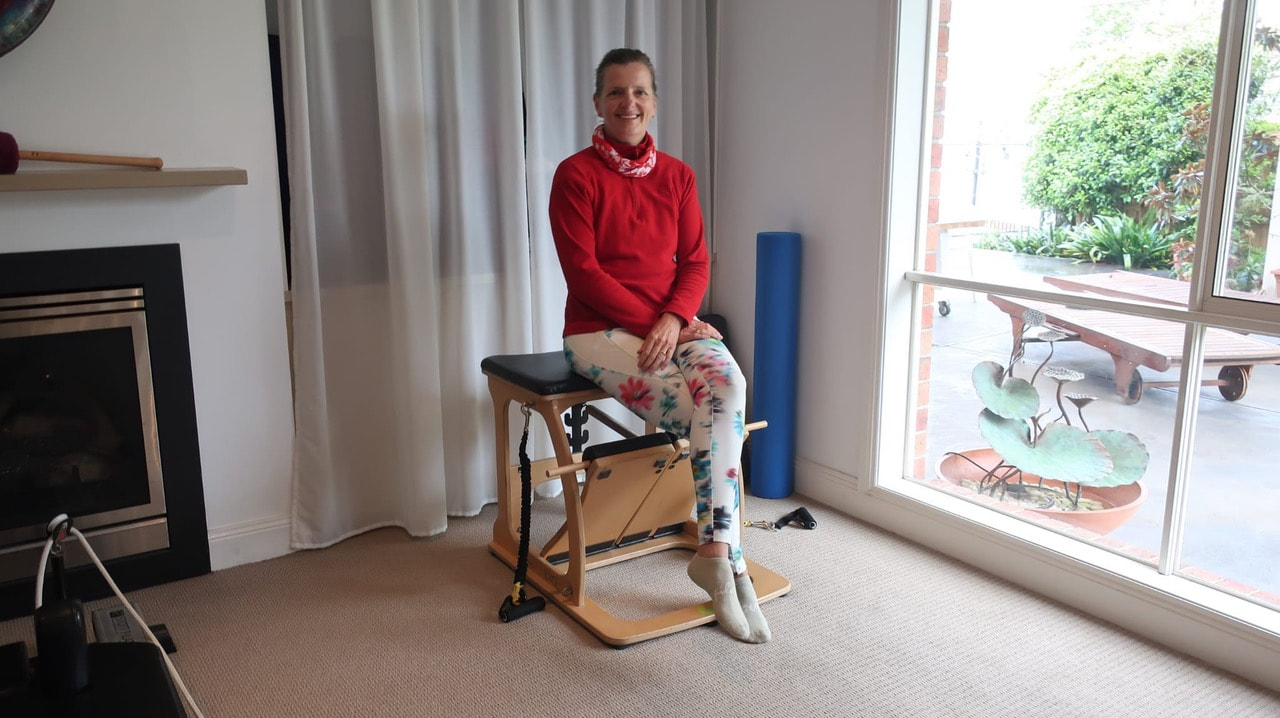
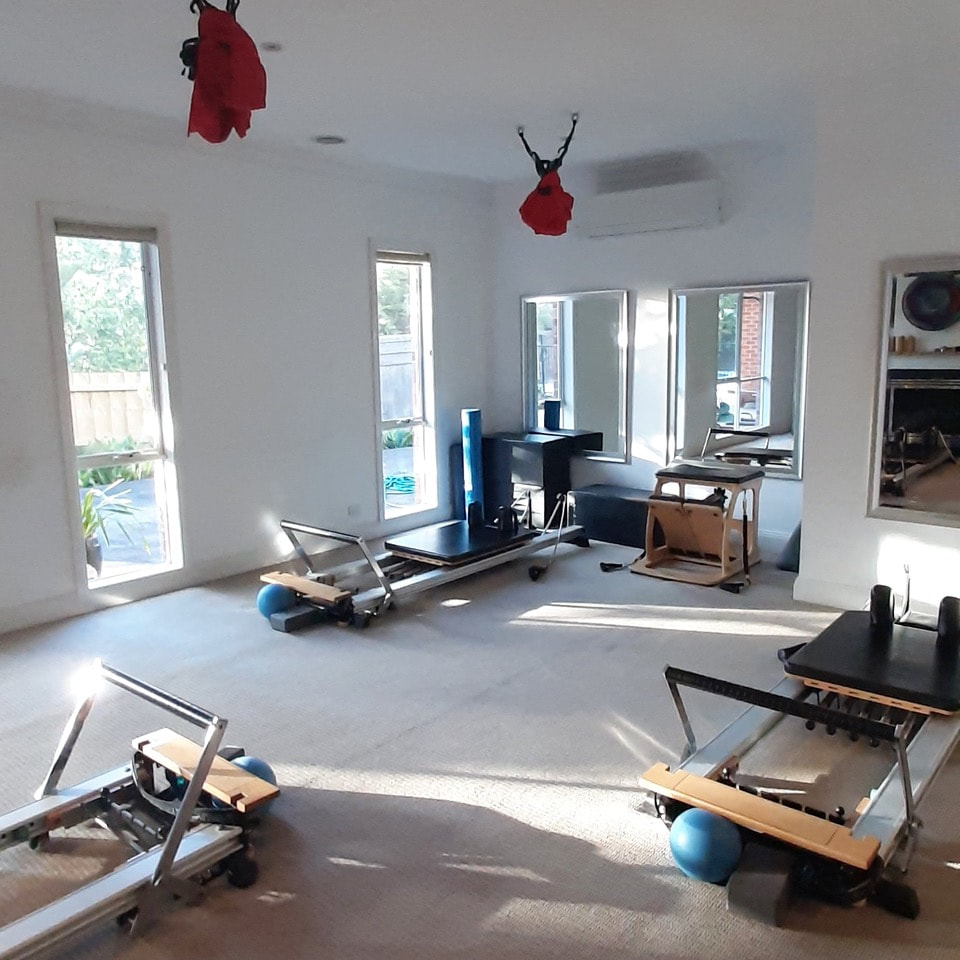
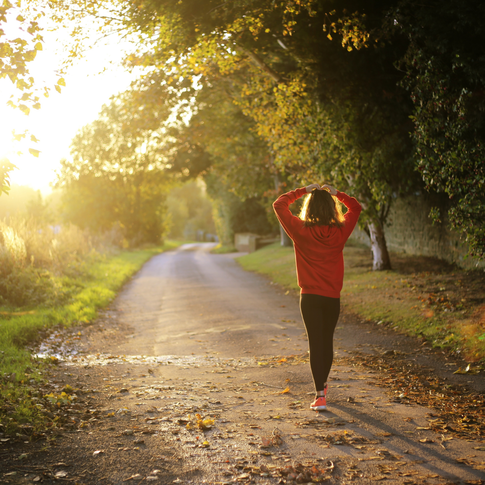
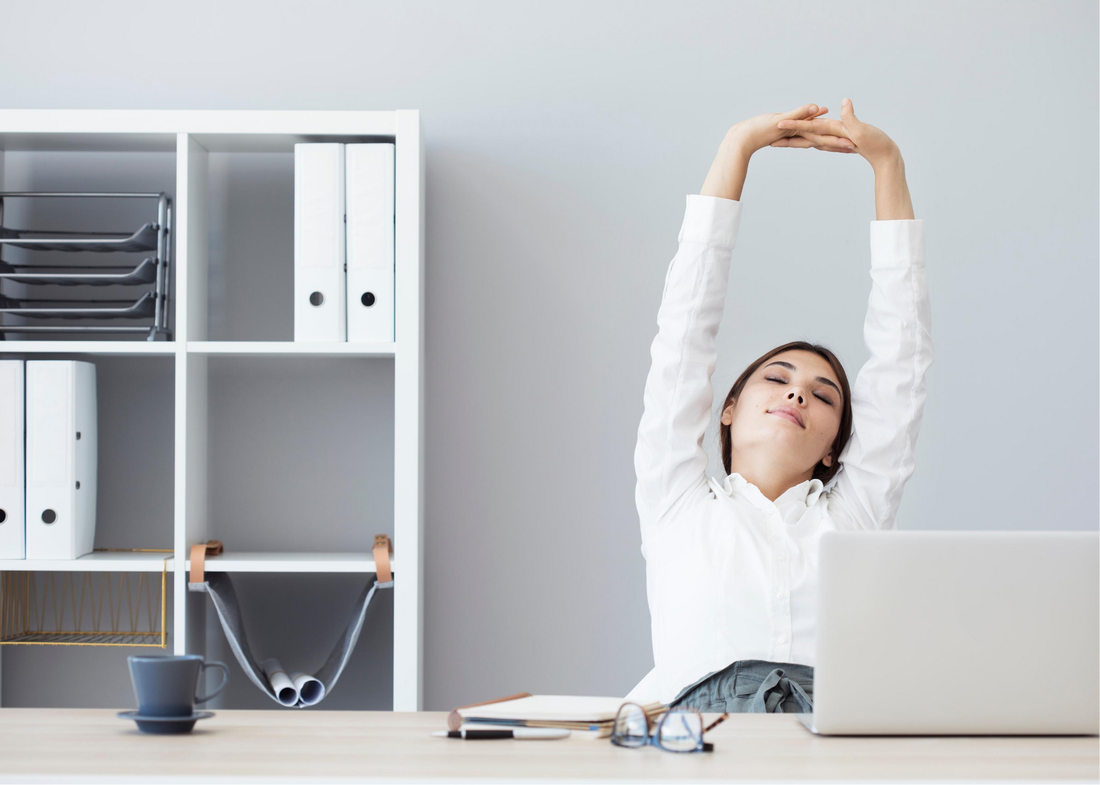
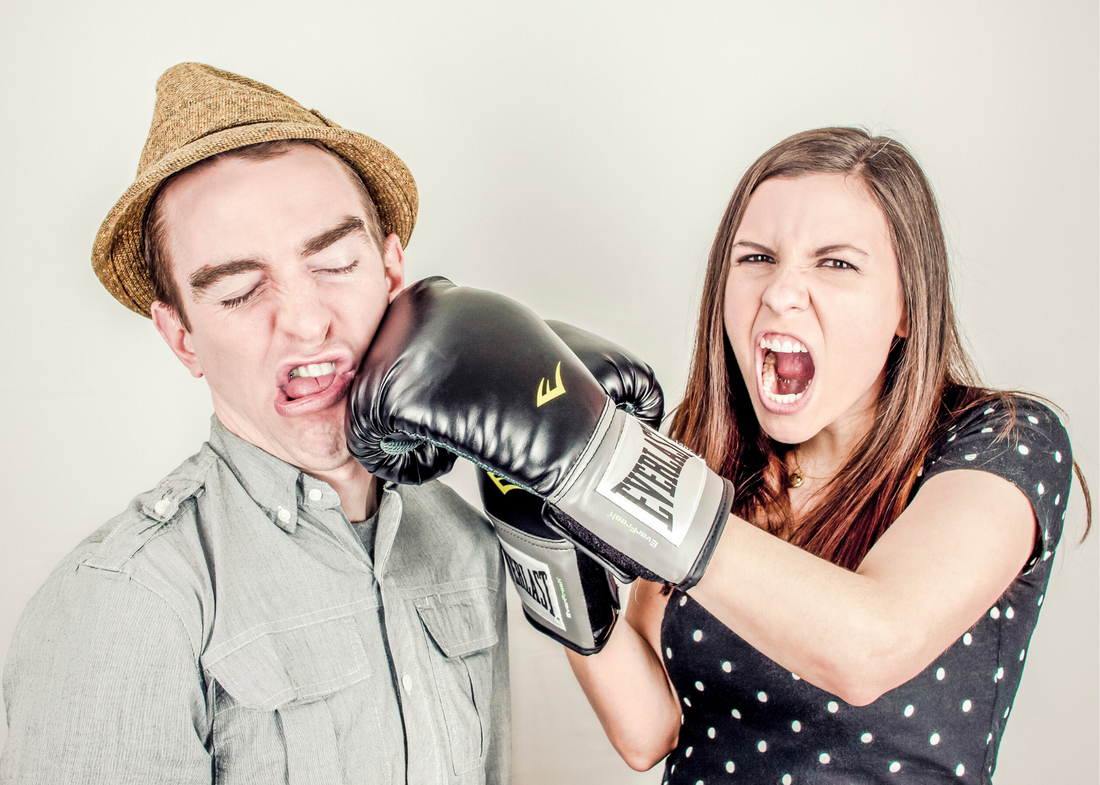

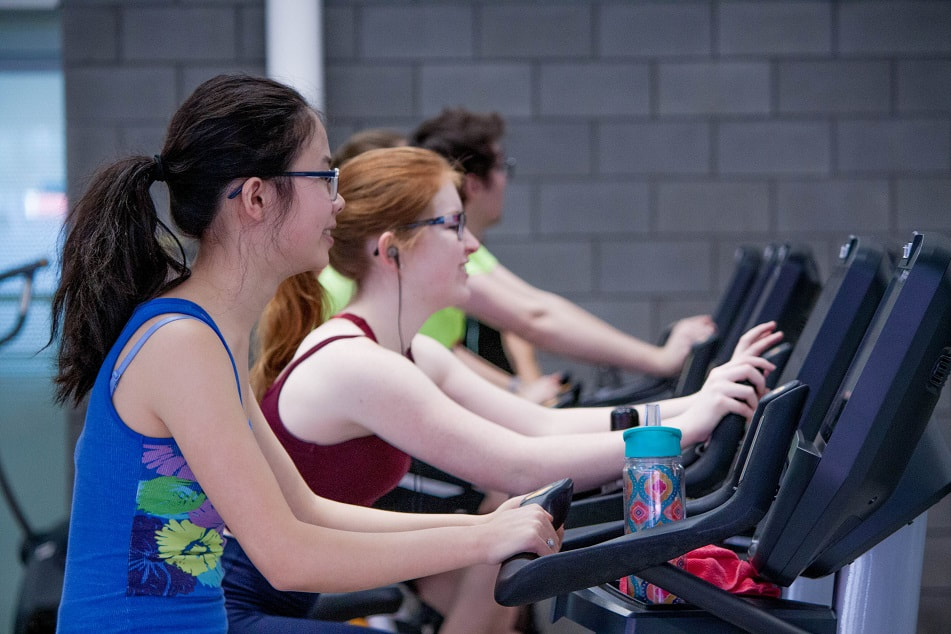
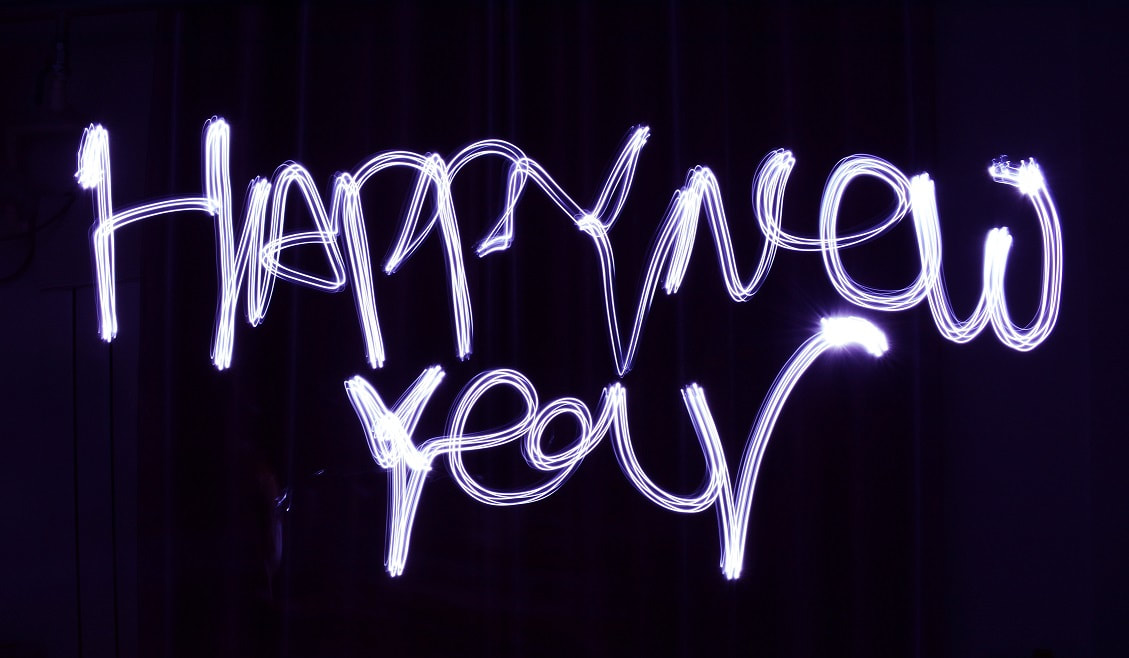

 RSS Feed
RSS Feed